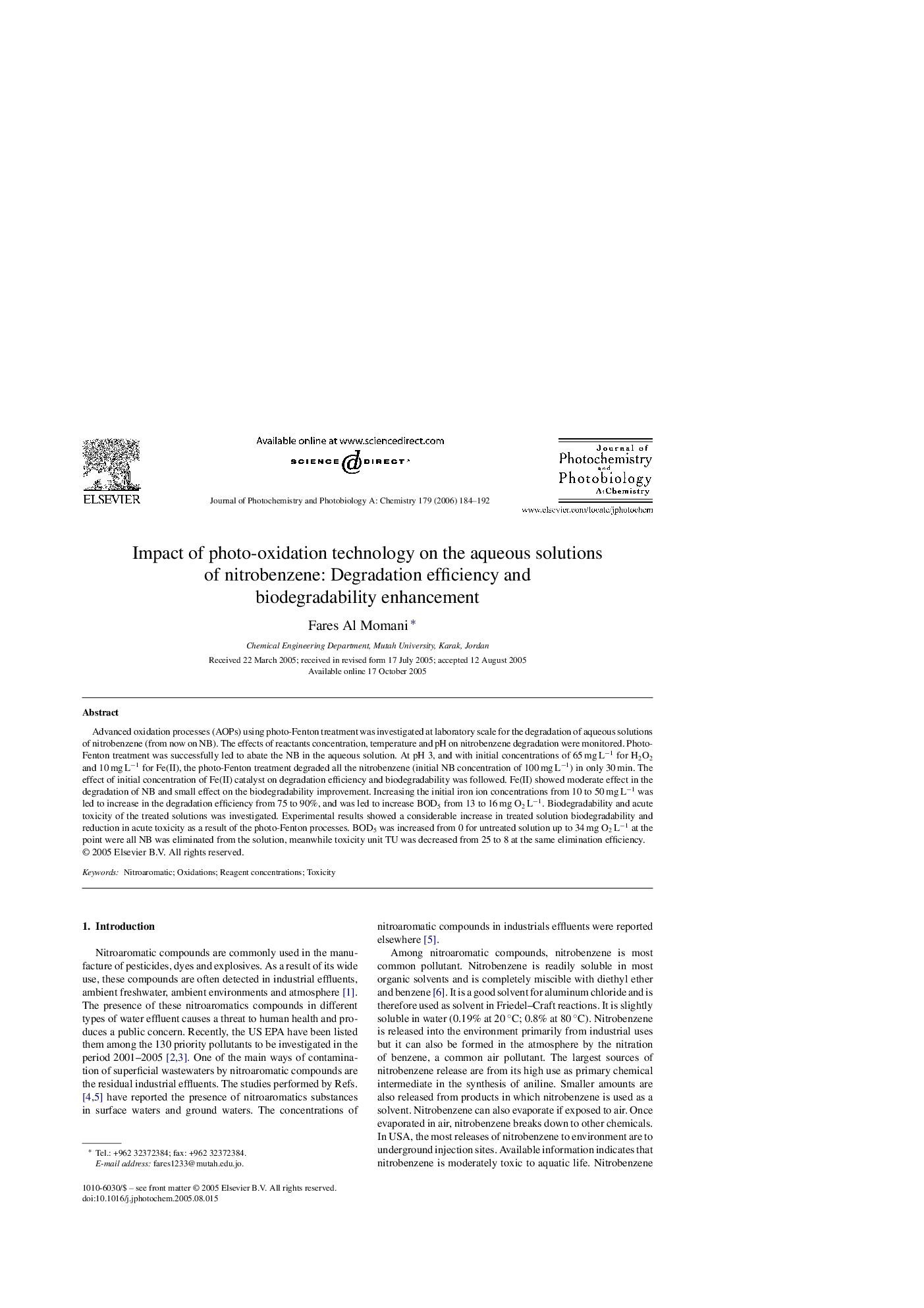| Article ID | Journal | Published Year | Pages | File Type |
|---|---|---|---|---|
| 28750 | Journal of Photochemistry and Photobiology A: Chemistry | 2006 | 9 Pages |
Advanced oxidation processes (AOPs) using photo-Fenton treatment was investigated at laboratory scale for the degradation of aqueous solutions of nitrobenzene (from now on NB). The effects of reactants concentration, temperature and pH on nitrobenzene degradation were monitored. Photo-Fenton treatment was successfully led to abate the NB in the aqueous solution. At pH 3, and with initial concentrations of 65 mg L−1 for H2O2 and 10 mg L−1 for Fe(II), the photo-Fenton treatment degraded all the nitrobenzene (initial NB concentration of 100 mg L−1) in only 30 min. The effect of initial concentration of Fe(II) catalyst on degradation efficiency and biodegradability was followed. Fe(II) showed moderate effect in the degradation of NB and small effect on the biodegradability improvement. Increasing the initial iron ion concentrations from 10 to 50 mg L−1 was led to increase in the degradation efficiency from 75 to 90%, and was led to increase BOD5 from 13 to 16 mg O2 L−1. Biodegradability and acute toxicity of the treated solutions was investigated. Experimental results showed a considerable increase in treated solution biodegradability and reduction in acute toxicity as a result of the photo-Fenton processes. BOD5 was increased from 0 for untreated solution up to 34 mg O2 L−1 at the point were all NB was eliminated from the solution, meanwhile toxicity unit TU was decreased from 25 to 8 at the same elimination efficiency.
